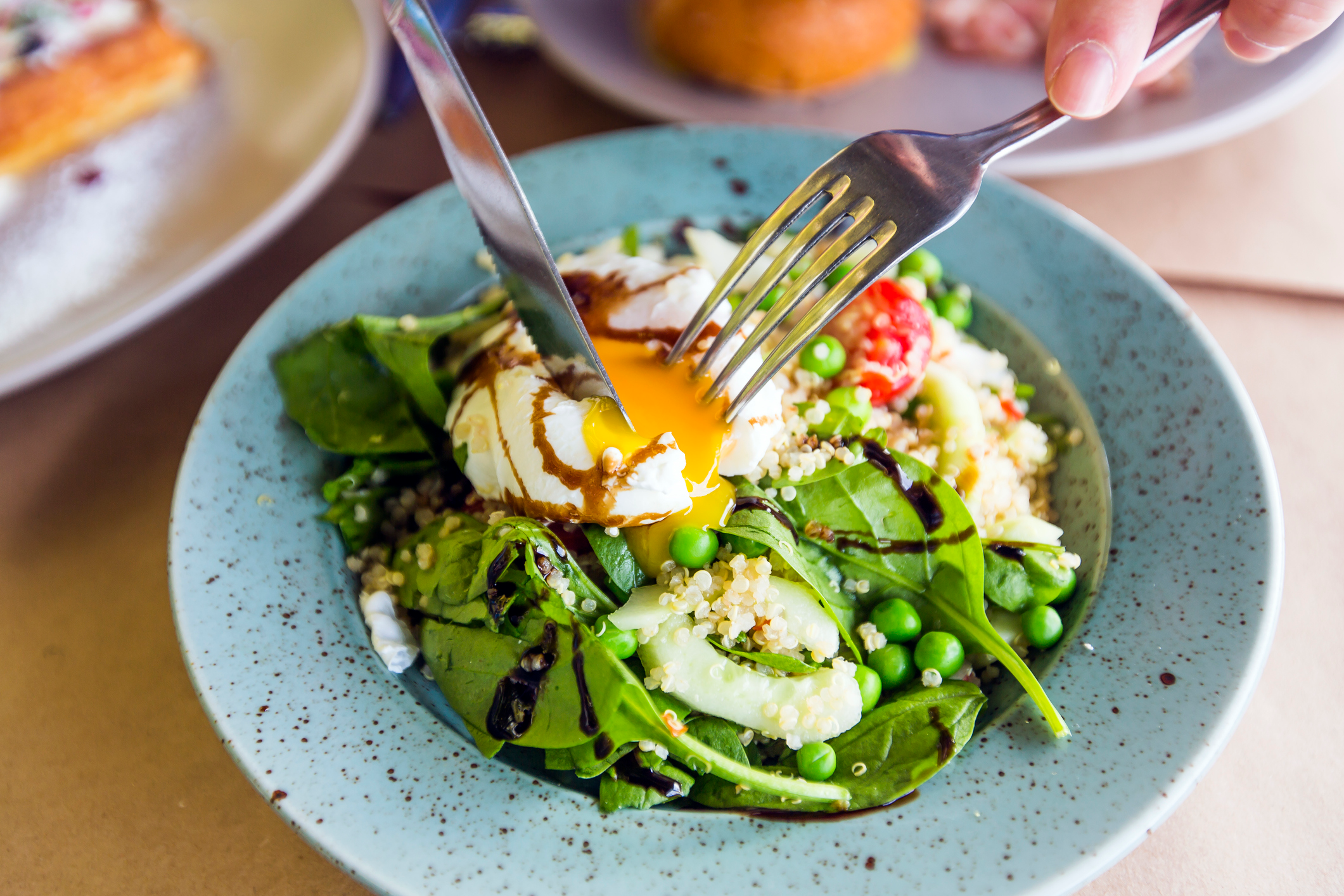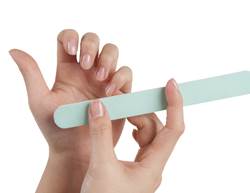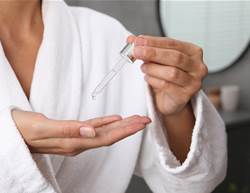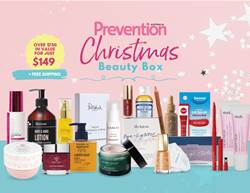While it’s always satisfying to have a fresh manicure that turns heads, we know there are more important reasons to keep your nails strong and healthy. “If the appearance of the skin is a window into a person’s internal health, the nails are at least a porthole,” says cosmetic dermatologist Dr Tyler Hollmig.
Healthy nails don’t just boost your confidence and make you look polished—they can signal that you’re supporting your overall wellbeing and protecting yourself against issues like infections and skin problems. Here are some common causes of weak, brittle nails, along with expert tips to help them grow faster and stronger.
What causes brittle, breakable nails?
Dry, brittle nails can have many causes, ranging from fungal infections to skin conditions like eczema, through to internal health issues such as heart, lung, liver or kidney problems, Dr Hollmig says. Nutritional deficiencies, coeliac disease or major health stressors like fevers or chemotherapy medications can also take a toll on your nails.
If you’re generally healthy, keep in mind that dry air can dehydrate your nails just as it does your skin. “The exact same cells that form the outer layer of your skin also form your nails,” explains dermatologist Dr Cynthia Bailey. “These cells harden more in your nails, but structurally, they share many common features and needs.”
Natural oils act as a glue to hold the layers of the nail together, Dr Bailey says, but when temperatures and humidity drop, that glue becomes more likely to break down.
Genetics and ageing also play a role. Nail growth is much like hair growth—different for everyone. “Not everyone makes nails that are durable at longer lengths,” says board-certified dermatologist Dr Chris G Adigun. She adds that slow nail growth isn’t the same as brittleness. Brittle nails grow at a normal rate—they just break more easily.
How to make your nails grow longer and stronger
Growing your nails takes time and a good dose of patience. “Nails grow slowly,” says Dr Hollmig. “It typically takes about six months to regrow a fingernail and around a year to regrow a big toenail.”
The good news? These expert-approved tips can help you support faster, healthier growth.
1. Choose foods that fuel nail growth.
While there’s no magic fix to dramatically speed up nail growth—most people average around 3 millimetres per month—diet plays a crucial role in keeping progress steady. Focus on nutrient-rich foods that give your nails the building blocks they need to stay strong:
- Cysteine – chicken, turkey, yoghurt, legumes
- Folate – spinach, asparagus, cos lettuce, avocado, green peas
- Biotin – egg yolks, salmon, nuts, seeds, spinach, broccoli
- Zinc – oysters, beef, crab, beans, nuts, seeds, fortified cereal
- Vitamin A – sweet potatoes, carrots, pumpkin, mangoes
- Vitamin C – capsicum, citrus fruits, strawberries, Brussels sprouts, kiwifruit

2. Leave your nails alone.
Dermatologist Dr Adigun often sees patients whose nail growth has been held back by chronic cuticle manipulation—pushing, trimming, or constant fussing. That also includes stress-driven habits like biting or picking.
The simplest fix is to leave your nails and cuticles untouched, though that’s easier said than done. If you tend to bite or pick without thinking, first work out your triggers—maybe it happens when you’re stuck in traffic or feeling stressed—and try to avoid those situations. Applying a nourishing hand cream or cuticle balm regularly can help too, giving you fewer dry spots to pick at.
If you need an extra deterrent, try a bitter-tasting nail polish or even pop a small bandage over the nail you can’t leave alone.
3. Wet your nails before you file.
Even if you’re aiming for longer nails, regular filing helps prevent snags and splits—just like a hair trim helps maintain healthy growth. To keep things gentle, Dr Bailey recommends wetting your nails first so they soften and become more pliable.
Always file in one direction using smooth, even strokes. Avoid sawing back and forth, which can cause splintering. A softer file is a good choice.
4. Protect them from harsh soaps and cleaners.
Harsh soaps, cleaning products, and solvents strip natural oils from your nails and weaken the keratin that keeps them strong. “At first, your nails begin to fray on the edges, becoming brittle. Eventually, the layers split,” Dr Bailey explains.
If you can’t avoid these products, wear gloves while cleaning or doing rough work. It’s a simple barrier that keeps your nails hydrated and resilient.
5. Don't skimp on the moisturiser.
Keeping your nails hydrated is just as important as moisturising your face or body. Dr Bailey recommends treating your hands and nails with nourishing oils that lock in moisture, preserve the cuticle seal, and strengthen the nail to encourage growth. Her top picks include natural options like jojoba oil, avocado oil, and shea butter.
Dr Adigun recommends a healing balm for fragile, damaged skin. Something that contains glycerin, which draws moisture into the area, and castor oil for lasting hydration.
6. Change up your regular manicure.
A flawless manicure might look stunning, but it can sometimes mask nail damage—especially if you have an undiagnosed allergy. “Allergy to a nail product will present with peeling, cracking nails,” Dr Adigun says. The most common culprits are tosylamide and formaldehyde resin, chemicals found in many polishes and nail hardeners.
Gel manicures aren’t always a safer bet. “Gel manicures may be tough on nails, causing brittleness, peeling, and cracking,” Dr Adigun explains. “Repeated exposure to UV light during these treatments can also increase the risk of skin cancer and premature ageing on the hands.”
For a healthier alternative, Dr Adigun recommends 5-free nail polishes—lacquers made without formaldehyde, dibutyl phthalate, toluene, camphor or formaldehyde resin.
7. Try some vitamins.
While certain vitamins and supplements can help support healthy nail growth, they should always be used alongside a balanced diet—not instead of one, says Dr Bailey.
One worth considering is biotin, a type of B vitamin shown to increase nail thickness by around 25% in people with brittle nails. It can also improve smoothness and reduce splitting, which may support faster growth.
A good-quality multivitamin with a mix of key nutrients—like the ones mentioned earlier—can help fill any dietary gaps. “I tell patients to go to their favourite, high-quality natural food store and ask the vitamin specialist for their best nail formula,” Dr Bailey suggests.
If you suspect a deficiency, speak with your GP about testing your nutrient levels. For example, taking an iron supplement can strengthen nails—but only if an iron deficiency is confirmed, Dr Adigun notes.
Always check with your GP before starting any supplement, especially if you’re on other medication or have regular blood tests.
8. Speak to a dermatologist.
If you’ve tried multiple strategies and still struggle with brittle nails or breakage, it may be time to see a dermatologist who specialises in nail health. In more severe cases, Dr Adigun says they may prescribe an oral antifungal medication to help accelerate nail growth. This is only recommended when symptoms are significant and other measures haven’t worked.










